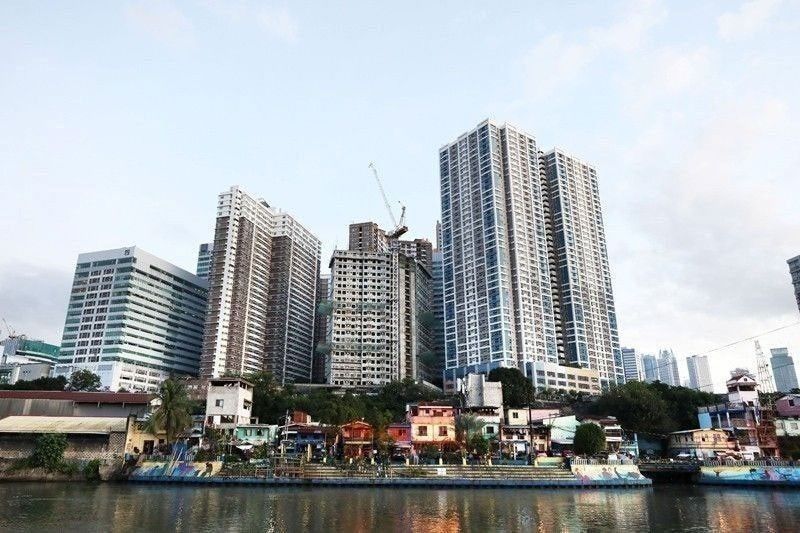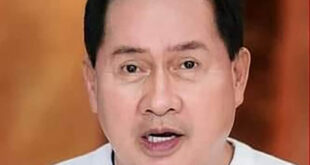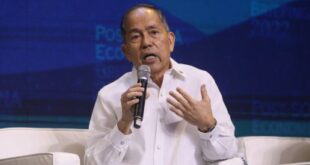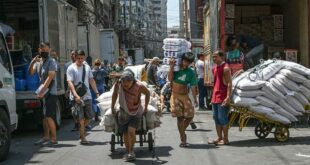
MANILA, Philippines — The country’s gross domestic product (GDP) grew 5.6% in 2023, falling short of the government target of 6 to 7%, the Philippine Statistics Authority (PSA) reported on Wednesday.
The most recent economic print indicated that the GDP growth for 2023 was beneath the 7.6% recorded in the year 2022.
In a press conference, National Statistician Dennis Mapa said that for the fourth quarter of 2023, GDP growth was at 5.6%, slower than the 7.1% that was recorded in the same quarter the previous year.
On a quarter-on-quarter basis, the country’s GDP growth weakened to 2.1% in the fourth quarter from the 3.3% posted in the third quarter.
Mapa attributed the economy’s growth to the contributions of financial and insurance activities with 4.3%; wholesale and retail trade; repair of motor vehicles and motorcycles with 2.1% and public administration and defense; and compulsory social activities with 7.4%.
Household final consumption expenditure (HFCE), on the other hand, slowed by 2.8% in the fourth quarter from 5% in the previous quarter, amid the three-month slowdown of the country’s inflation rate from October to December.
National Economic Development Authority (NEDA) Chief Arsenio Balisacan said that the HFCE slowdown is due to the previous food inflation recorded.
In December 2023, the PSA said food inflation went down to 5.5%, being one of the highest contributors to the last month’s inflation print.
One of the drivers of food inflation is rice, which posted a 19.6% inflation in December 2023. PSA said this was the highest since March 2009.
The government’s final consumption expenditure (GFCE) also declined to 3.6% coming from the 6.7% in the third quarter.
Balisacan attributed the contraction in GFCE to reduced government spending this year compared to 2022, influenced by the election season and the ongoing adjustment to COVID-19 vaccinations in the country.
The NEDA chief also said that the government decided to resort to “fiscal consolidation” which resulted in the GFCE decline.
“It was intentional na hindi mataas yung growth ng government spending for 2023,…we want to achieve fiscal consolidation which means lowering the fiscal deficit and government debt,” Balisacan said.
(It was intentional not to have a high growth government spending for 2023. We aim to achieve fiscal consolidation, which involves reducing the fiscal deficit and government debt.)
Services experienced the highest growth by 3.2% among the three major industries, followed by industry at 0.4%.
Meanwhile, agriculture, forestry, and fishing saw a decline of 0.02%.
The Development Budget Coordination Committee on Dec. 15, 2023, revised its GDP growth target for 2024 to a range of 6.5% to 7.5%, down from the earlier estimate of 6.5% to 8% expansion.
On January 26, Bangko Sentral ng Pilipinas Governor Eli Remolona said that the central bank will have “more room” for a rate hike if the economy picks up in the last quarter of 2023.
However, he said that BSP will stay “hawkish” despite easing inflation and possible rate cuts.
The central bank’s first rate-setting meeting for 2024 is scheduled on February 15.
Since May 2022, the BSP has raised key policy rates by 450 basis points to control inflation and stabilize the peso, establishing itself as the most aggressive central bank in the region. — Ian Laqui
*****
Credit belongs to: www.philstar.com
 Atin Ito First Filipino Community Newspaper in Ontario
Atin Ito First Filipino Community Newspaper in Ontario






